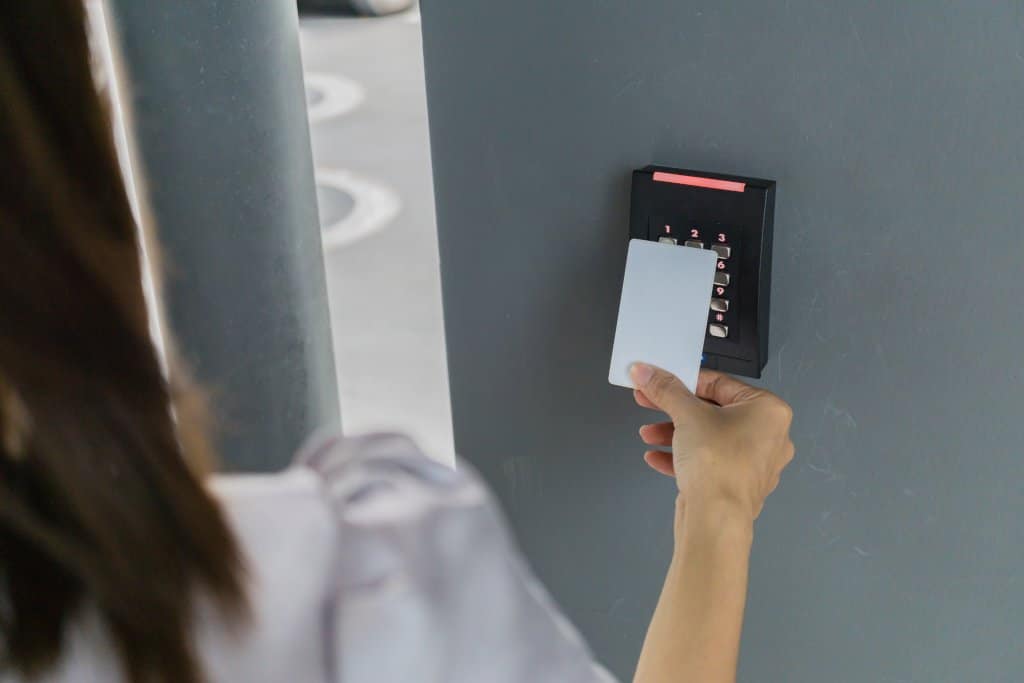Cloud technology has been proven to help businesses remain operational during the pandemic and has helped facilitate a digital transformation process that was already underway in many sectors, including financial services. Now, as the success of the vaccination programme and drop in infection rates leads to a relaxing of lockdown regulations, retail and investment banks will be looking to help large numbers of employees back to work to resume full service.
But this gradual transition will require planning and consideration to be given to health and safety alongside the expected high levels of security. While mask wearing and social distancing measures are set to be relaxed over the coming months, it’s nevertheless imperative that day-to-day business is not jeopardised by a spread of infection as a result of complacency. This is where technology has an important role to play, with benefits that will transcend the pandemic, equipping banks and financial services for future challenges.
The evolution of hosted physical security
Physical security too is transforming. In today’s modern world, dated standalone CCTV and manually operated access barriers, are increasingly being replaced with cloud-enabled network cameras and digital access control mechanisms. Such technologies provide multiple layers of protection, both at a building’s entrance and within the premises itself. The internet of things (IoT) brings seamless device connectivity and data sharing for a streamlined, efficient and intelligent security solution.
To better understand the capacity for cloud to help improve security and provide operational benefits during the pandemic and beyond, hosted security provider Morphean, commissioned a survey of 1,000 senior decision makers across the UK, Germany and Sweden. Results revealed that 51% of respondents are currently using a cloud-based video surveillance (VSaaS) and/or a door entry/access control system (ACaaS), and that 95% of those surveyed agree that if an existing security system could deliver insights beyond security to assist decision making it would influence adoption.
Improving the management of premises and people
In such a high security environment, VSaaS and ACaaS can help managers to determine staff whereabouts and to know who is in the building at any one time. For example, an access control solution which is linked to an HR database can check the swipe of an access card against staff records. Surveillance cameras also provide secondary authentication through visual clarification of an individual’s identity. An employee who is flagged by the system as being on leave, absent or no longer employed will trigger an automated alert to relevant personnel, who can take swift action.
With concerns turning to the potential spread of Covid-19 variants, frictionless access control mechanisms ensure a fast and hands-free method of admitting staff to the premises, using surveillance cameras, QR codes, or mobile phone identification to avoid the touching of shared surfaces, minimising cross infection risk. IP audio equipment that is connected to the surveillance system can be used to issue messages, either pre-recorded or in real-time, to remind staff of the importance of maintaining a safe distance from each other and configured to trigger an automated warning message while simultaneously making security personnel aware of any situation.
Unlocking powerful operational insights
Ensuring that only staff who are necessary for day-to-day operations are on site is a sensible way to further minimise infection risk. Remote monitoring and operational insights can be employed to check premises via tablet or mobile, removing any need to enter a site unnecessarily. In fact, access from any location (32%), remote maintenance (31%), and the ability to monitor empty sites (29%) were all identified as key benefits of introducing VSaaS and ACaaS, alongside better security (40%) and better functionality (33%). VSaaS and ACaaS include regular software updates and firmware upgrades, resulting in a solution that is always online and always up to date.
VSaaS and ACaaS are based on a pay-per-use business model which means that systems can be easily scaled up or down in accordance with customer requirements, while monthly recurring payments remove the need for large upfront capital expenditure. Partnering with a trusted physical security provider will ensure delivery of a future-proof system that’s capable of high levels of security while unlocking powerful business intelligence. Managers will benefit from insight into staff movement around the premises and adherence to health and safety protocols for complete peace of mind.
The evolving threat landscape and the broad range of challenges that the future will bring is something that all companies must consider. Fortunately, cloud-enabled physical security now appears to sit firmly on the agenda. For the banking and finance industry, VSaaS and ACaaS provide a flexible security and business solution that will enable them to meet ever evolving demands and confidently face the future.
For further insights on VSaaS and ACaaS adoption in Europe, download Morphean’s whitepaper:
Landscape Report 2020/21: Hosted Security adoption in Europe





